Wizard Tag
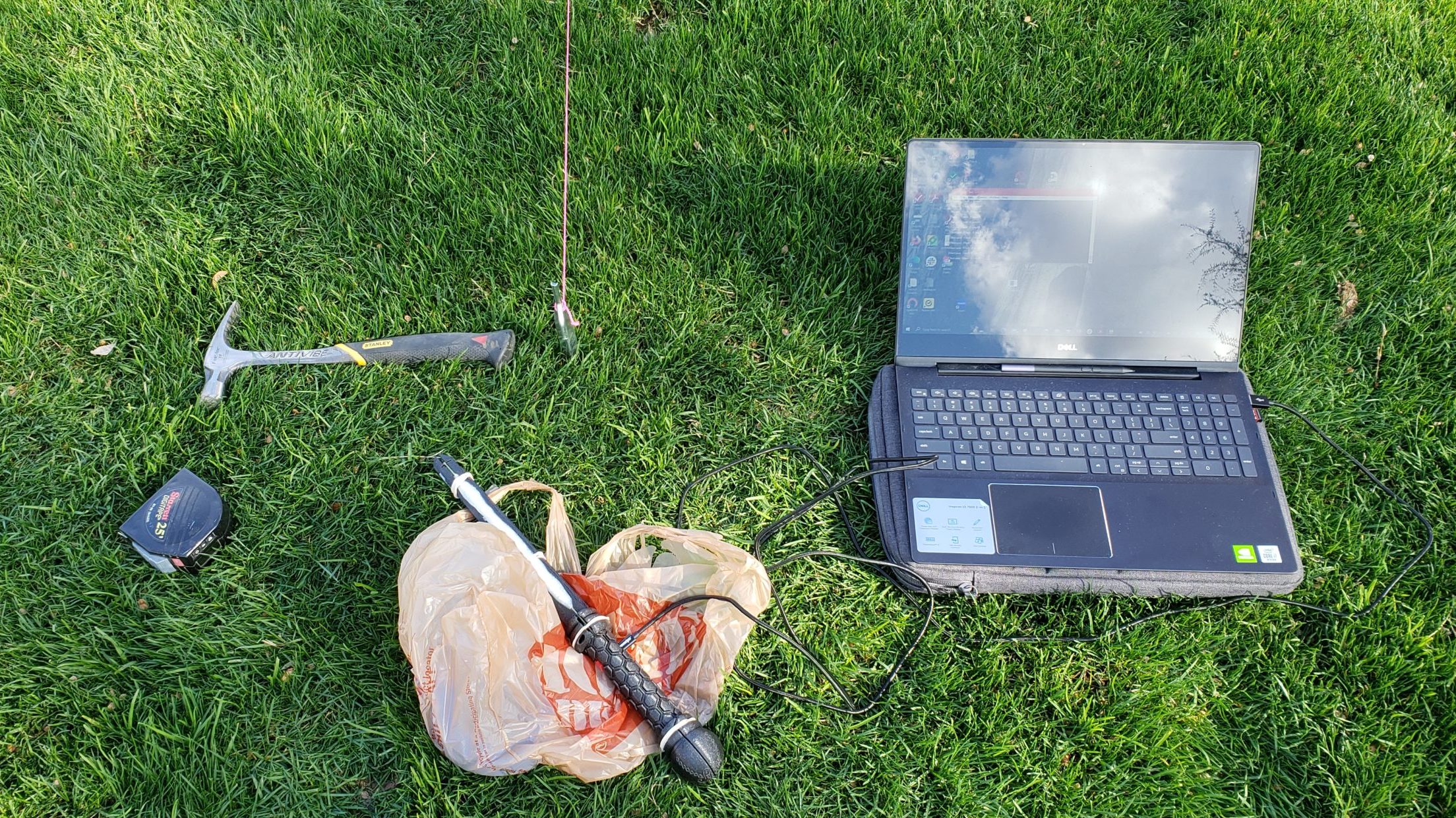
When people go somewhere to play laser tag, they expect a good simulation of the capabilities of short and long-range weapons.
Wizards should expect no less when they get their hands on a Wizard Tag wand which contains distinct systems to produce coverage simulating a fireball or an ice-spike attack.
Why is Infrared Testing Necessary on a Laser Tag Wand?
Magic has limits, just like technology; that’s part of what makes our magic real!
To the average non-wizard, it probably looked like a couple of people playing with flashlights, cables, computers, and a hot pink mason’s line with distance increments marked using carpenter’s tape and Sharpies.
In reality, we were testing Infrared ranges and effective angles because our wand, like most “laser” tag devices, uses harmless infrared light for communication, rather than potentially dangerous lasers!
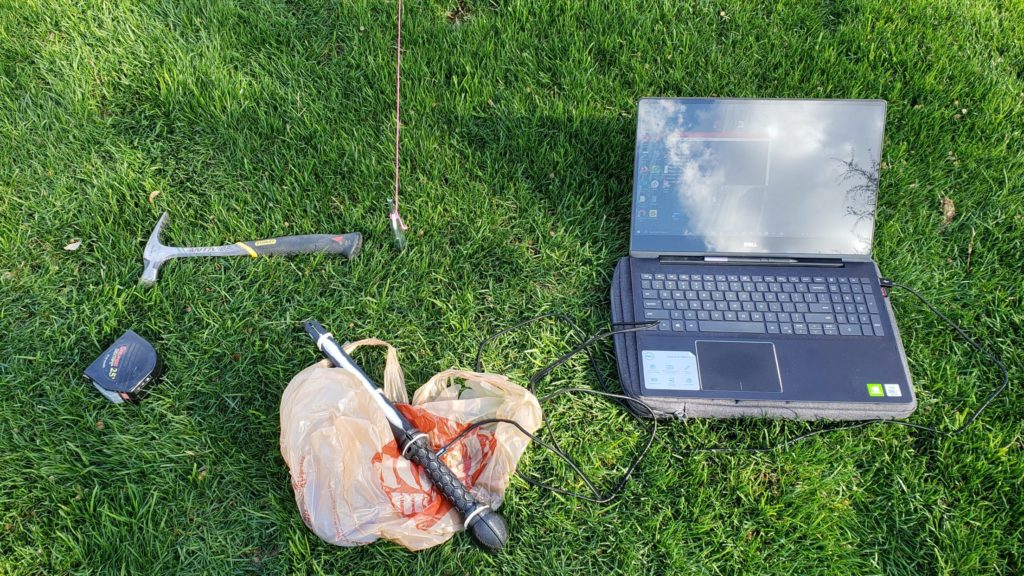
The important thing is the magic.
Every wizard must know that when they step out the back door to defend their home, encounter a band of brigands in the forest, or for any other reason get rushed by the enemy at close range, they can rely on their trusty fireball. For some reason, wizards love to test the efficacy of their fireballs in small rooms (at least that’s my personal favorite)!
We did our testing outdoors, checking the range and size of the spell, to make sure that even though the range is limited, it has a wide area of destruction.
When you can see your enemy and just have to take them out, but they are clearly a few fireballs away, the answer is an ice spike!
The ice spike is more concentrated and is really a one-target spell. The advantage is the great range and eventually our little park proved insufficient for the testing. We moved into the street and persisted to test in the early morning chill of the dry desert air in Arizona, later under cloudless skies with blazing sunlight, and finally in the bright, white, -40 degree deep-freeze in North Dakota.
And boy does that ice spike fly!
The accuracy seems to improve at dusk and is really good at night, but you will have no problem shooting your enemies at distance when they invade your turf unless you own a castle surrounded by hundreds of acres of lawn. In that case, wait until they get close and blast them all with a fireball when they approach the portcullis!
How can we increase or decrease range to simulate a close up explosion or a distant targeted attack.
The chart below shows that if you increase the radiant intensity of the infrared emitters, it increases the distance the signal travels.
That seems obvious, but the chart helps us by telling us how much to add, which is really how much we need to increase the forward voltage going to the IR LEDs. The chart helped us to predict the effect of our changes in the wand. In order to change the range, we had to change the resistance in the IR LED circuits.
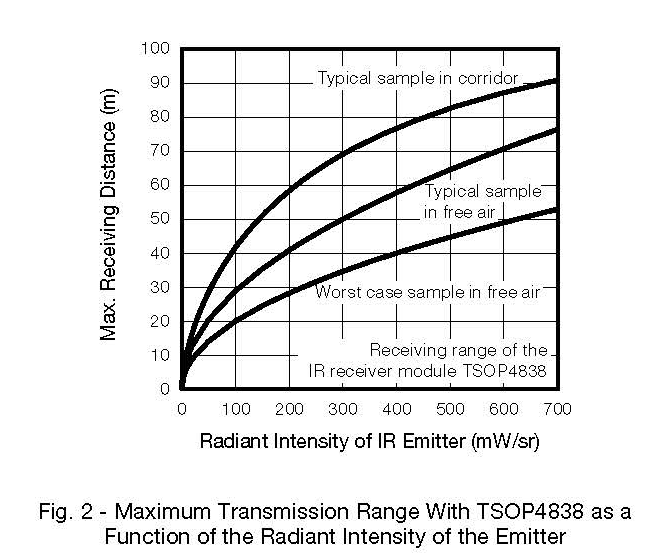
Our engineers did this by adding resistors or removing them and replacing them with smaller resistors.
Each time there was a change, all we had to do was test the reception of each beam at fixed distances until we got the right combination that gave us the proper range for a fireball or ice-spike.
Now when we do our next revision of the PCB, we know which resistor to place for maximum IR power!
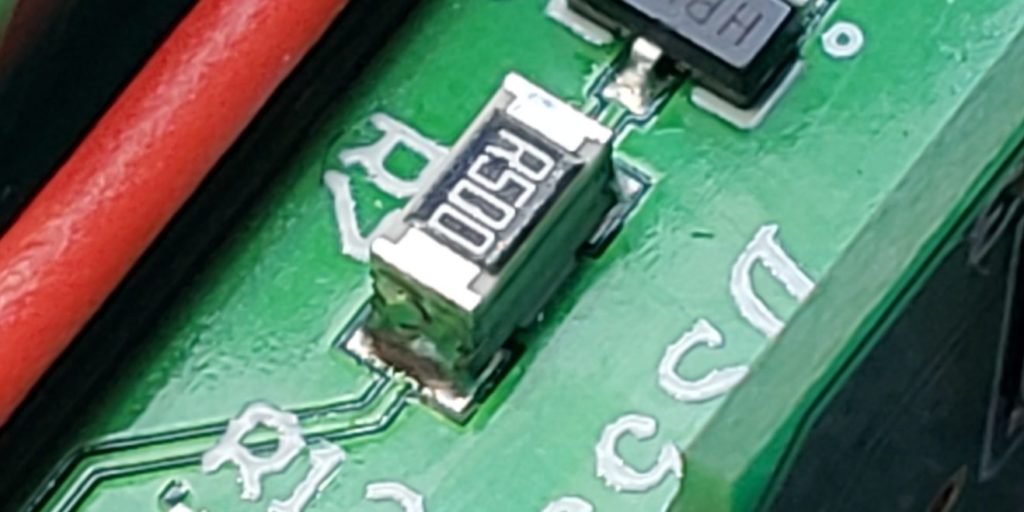
How can we enlarge or reduce the area of effect?
The charts below show that the two IR LEDs we chose have very different beams (the area the IR beam will cover).
The first LED is perfectly suited to be our fireball. At short range, it has a 50 degree cone of effect that narrows quickly and has some effect in a straight line. The distance for the fireball is about 30ft.
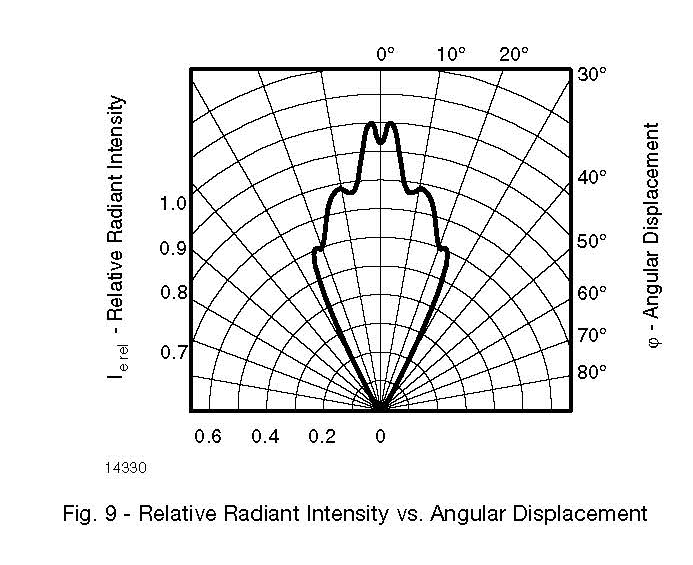
The second LED actually uses a parabolic lens to focus the beam. At long range, it has a 6 degree of effect that stays a pretty narrow line perfect for aiming for specific targets far away. The distance for the ice spike is about 150ft.
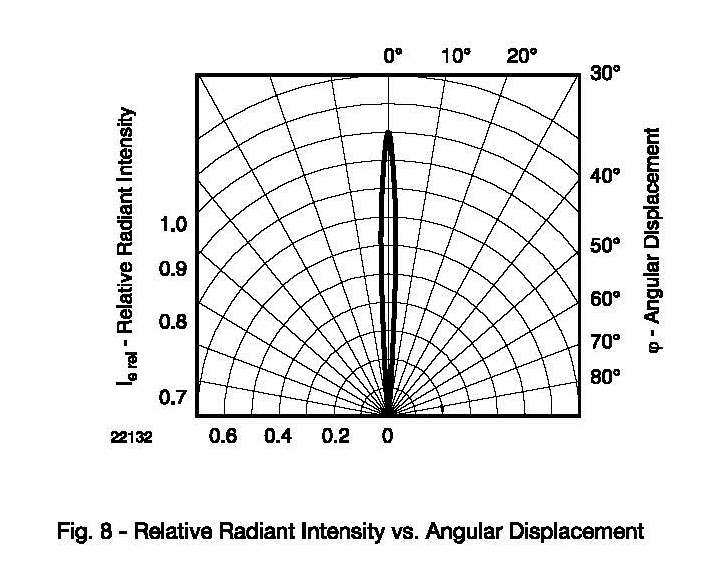
In testing we proved that they work as advertised!
Changing the voltage increased or decreased range, but did not affect the angle of the beam. In reality, our fireball is more of a cone of flame, but since fireball is iconic for wizards, it is still our short-range, area-of-effect spell of choice.
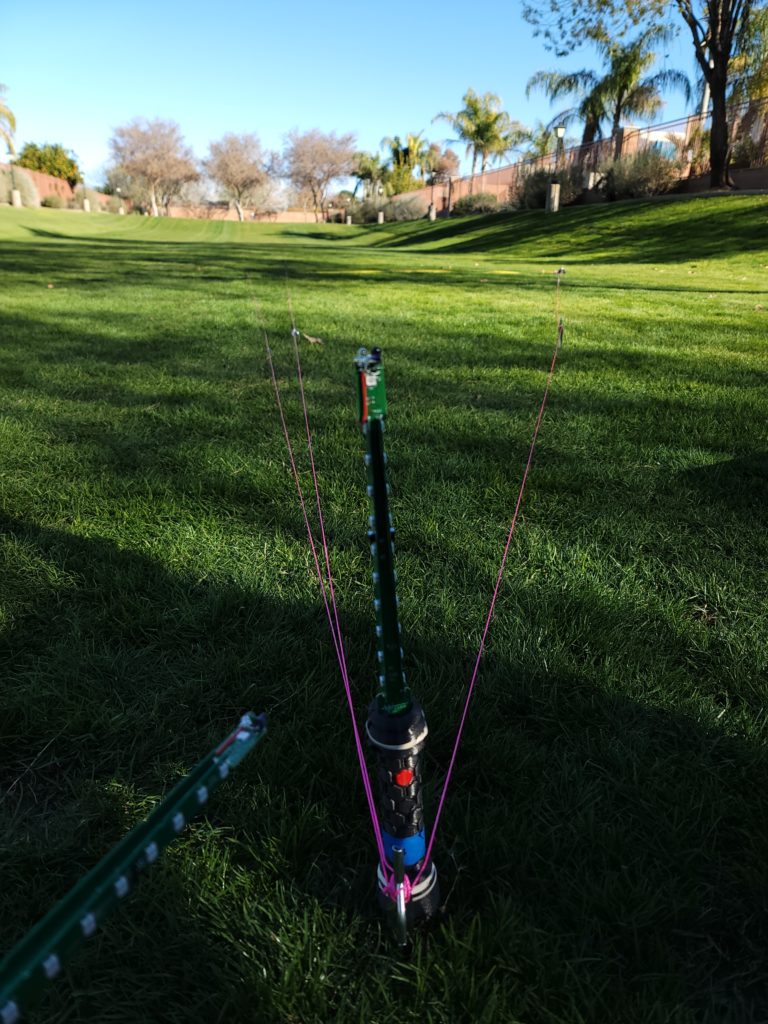
In laser tag arenas, sometimes there isn’t much difference between shotgun and sniper mode. You might hear a different sound effect, but in close quarters they often seem to work the same.
In Wizard Tag, you will notice a difference! Ice Spike can hit targets at impressive distances, which is great for outdoor fights! And whether people rush you in a maze or a forest, you will be able to defend yourself effectively against the masses with a fireball.
Share your thoughts in the comments below!
- What do you think is a realistic range and area of effect for a fireball?
- What about an ice spike?

Want more Wizard Tag updates?
Follow our Progress as we create Laser Tag for Wizards!
#makingmagicreal
Browse the Latest Blogs:

Game Review: The Vale of Eternity
- 6 min read
- Date: May 12, 2024

Game Night: Root
- 4 min read
- Date: May 5, 2024

Wizard Tag Web Design
- 4 min read
- Date: April 28, 2024
Testing the wands was a fun part of the job! We not only used math that we told our teachers we would never need, but we also learned a bit about circuits, resistance and power! What questions do you have about Wizard Tag Wand testing?